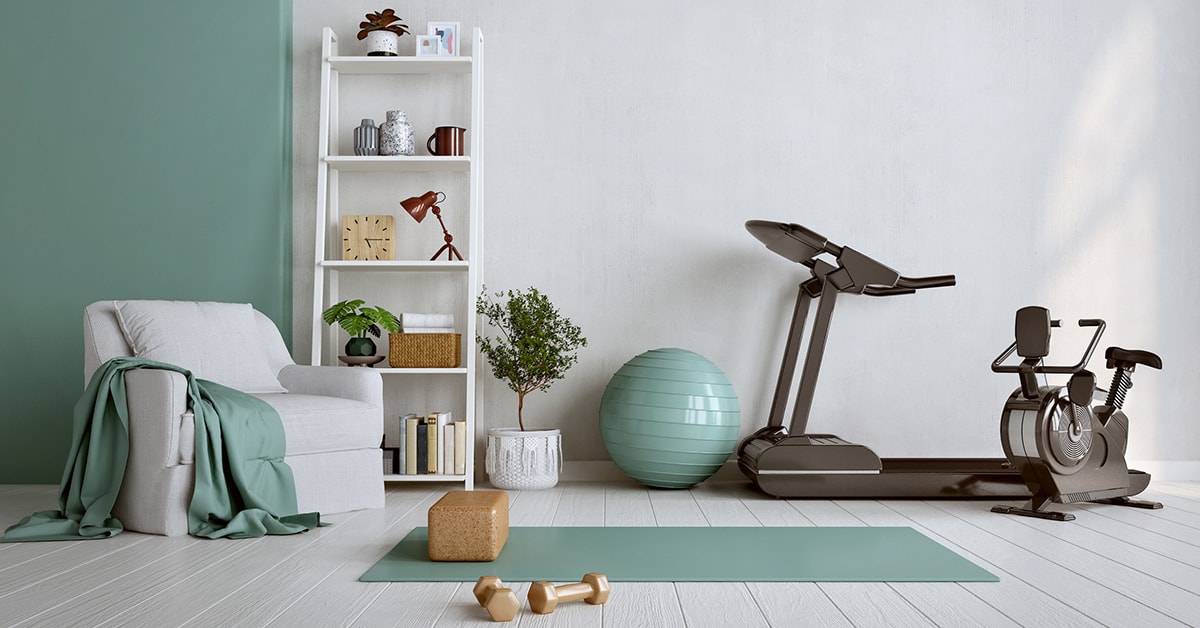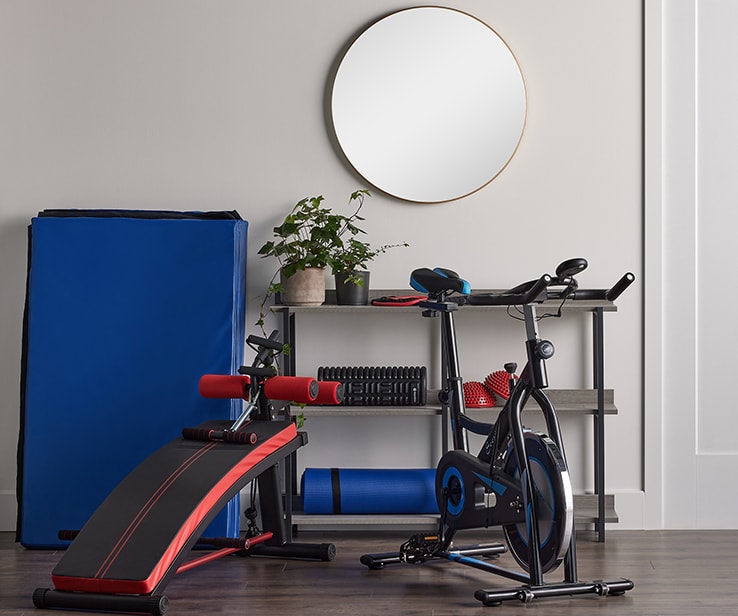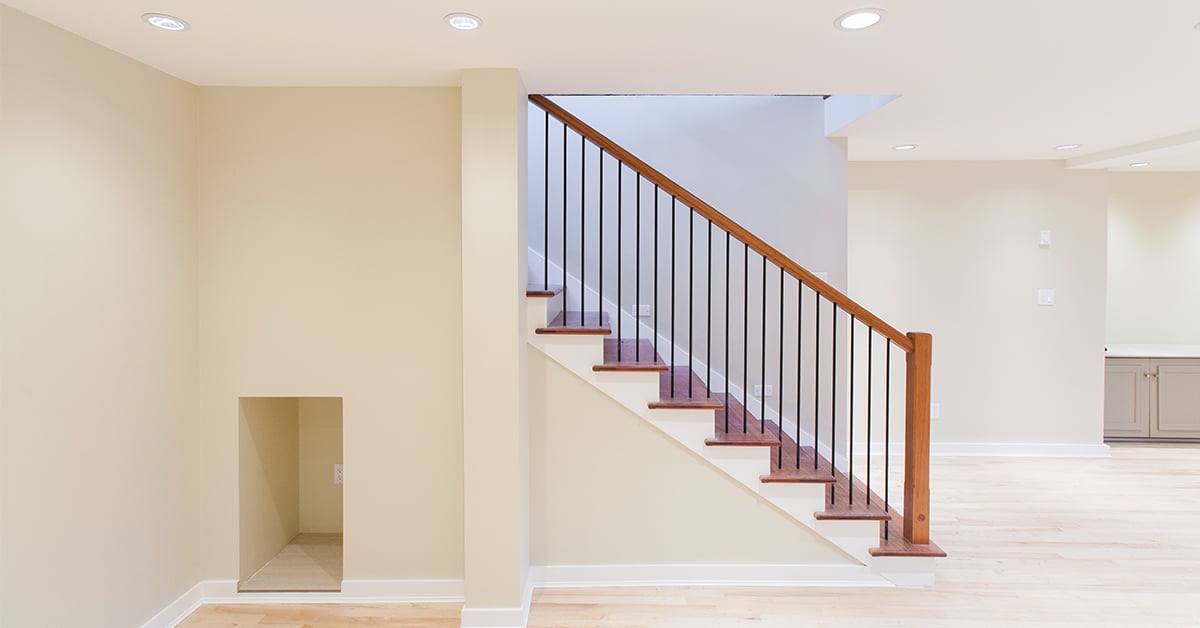
Published on January 12, 2023
Home Gym Ideas for Fitness Inspiration
Getting regular exercise is key to an overall healthy lifestyle, and the easiest way to keep up your fitness is to set up your very own home gym. Find out how to set up a gym in any space in your home and how to choose the right equipment.
Home Gym Ideas by Room
- Available space
- Space needed
- Comfort

Bedroom

Basement

Living Room

Garage
How to Choose the Best Fitness Equipment
Treadmills are consistently among the most popular types of cardio equipment, and for good reason. The simple, conveyor-belt design allows for fantastic workout versatility, letting users run or walk at whatever pace they prefer. Changing the operating speed also allows you to keep your heart rate consistent and changing the incline lets you target different lower body muscles. Treadmills are used by fitness beginners, fitness professionals, and those who want to lose weight. They are a top choice for a home gym.
Ellipticals
Ellipticals also enjoy a good deal of popularity, as they mimic a motion similar to walking, running, or climbing up stairs. These machines operate on a flywheel system which moves as the user steps down on the pedals. Users can adjust the speed and resistance of the elliptical to customize their workouts.
Stationary Bikes
A stationary exercise bike can be just as effective at working out the lower body and burning calories as a traditional bicycle. It is a fantastic, low-impact workout great for people with weaker joints or certain types of injuries, as the body weight is evenly distributed. It also removes the safety concerns inherent in riding on the open road or natural terrain.
Rowing Machines
Few pieces of exercise equipment can beat the full-body cardio workout of a rowing machine. Using a sliding seat and a cable, these machines stimulate the rowing motion and particularly engage the arms and back. They are an excellent choice for people of all levels of fitness.
Treadmill vs. Elliptical
Benefits of a treadmill:
- More versatile and customizable
- Easy to take your outdoor workout indoors during bad weather
- Potentially burns more calories depending on workout intensity
Benefits of an elliptical:
- Lower impact on the joints
- Less repetitive pounding on a hard surface
- Also incorporates the upper body
More Fitness Equipment
Weight Training Equipment
Yoga and Pilates Equipment
Fitness Accessories
How to Choose Gym Flooring

Exercise Equipment Mats

Rubber Floor Tiles

PVC Vinyl Tile

Foam Flooring

Rubber Rolls
Pro Tip
If you know you will need to store your gym flooring away from time to time, then lightweight PVC or rubber tiles will save you a lot of time and effort, especially if you will be carrying it up and down stairs. However, keep in mind that lighter options are also less durable.
Home Gym Flooring by Room
Bedroom and Living Room Gyms
To prepare a bedroom or living room gym, arrange the furniture in a way that leaves enough of an open area to work out in. You’ll want to use flooring products made for your specific flooring type, like carpet or hardwood. PVC plastic modular flooring typically works better over carpet while rubber mats are a top choice for wood floors. Interlocking flooring is also easier to remove in case you need to host a guest.
Basement Gyms
When choosing a flooring type for the basement, consider that basements are often prone to moisture that can cause damage or mould. For this reason, you will want to choose plastic flooring or a waterproof carpet mat that has a raised base to facilitate airflow. Another suitable material for the basement is rubber, as it is not only waterproof but will provide extra padding for your feet overtop of the cold concrete floor.
Garage Gym Floorings
If your garage will double as a gym while you still use it to park your car and store other outdoor tools and equipment, then the flooring will need to stand up to moisture, oil, and automotive fluids. Rubber flooring is not ideal, as it can be damaged or even dissolved by automotive chemicals. Instead, go with polypropylene, polyvinyl, or PVC. Interlocking tiles, floor mats, and flooring rolls are all good options if you may need to move your equipment and flooring around to create extra space. They can all be easily disassembled and stored away. Flooring rolls are more convenient for larger areas while floor tiles are great for irregularly shaped spaces. Tiles are also easier to replace.
Good to Know
Some garage flooring products may not be suitable for a garage home gym. Check the manufacturer’s specifications to make sure.
DIY Home Gym Ideas
A good home gym is also comfortable and free of clutter. Consider installing a ceiling fan to keep you cool during your workouts and using some wall-mounted storage to keep your free weights, exercise mats, and other equipment out of the way when not in use.






















